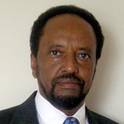
Every society has its unique central organizing and ruling ideology and theoretical models in a given historical epoch that it uses as its lenses to look at and interpret the world and to survive freely and advance its civilization or ways of life without disruption from within and without. Ideology plays many roles in a society, and its essential function is to define and promote the political, material, and cultural interests pf a group, a nation, a social class, a state, or other entities; it also "offers an explanation and an evaluation of political, economic, and social condition, provides its holders a compass that helps orient them and develop a sense of identity, and tenders a prescription for political economic, or social action." Before the Oromo were colonized, they, too, had their central organizing and ruling ideology and theoretical models that were embedded in the gadaa/siqqee civilization that organized and guided them as a society socially, culturally, religiously, politically, militarily, and economically. We advance the idea that without retrieving and developing the best elements of their heritage, the Oromo cannot fully develop Oromummaa (national culture, identity, and ideology) as their organizing and central ideology and their theoretical models of liberation in order to empower themselves as a nation in the twenty first century. While developing their ideology and theoretical model, Oromo nationalists need to recognize and overcome the devastating ideologies, behaviors, and theoretical models of their oppressors that have confused and disempowered their nation.
- Gadaa/siqqee,
- Oromummaa,
- Oromo liberation,
- Institutions,
- Ethiopian colonialism
Available at: http://works.bepress.com/asafa_jalata/84/
